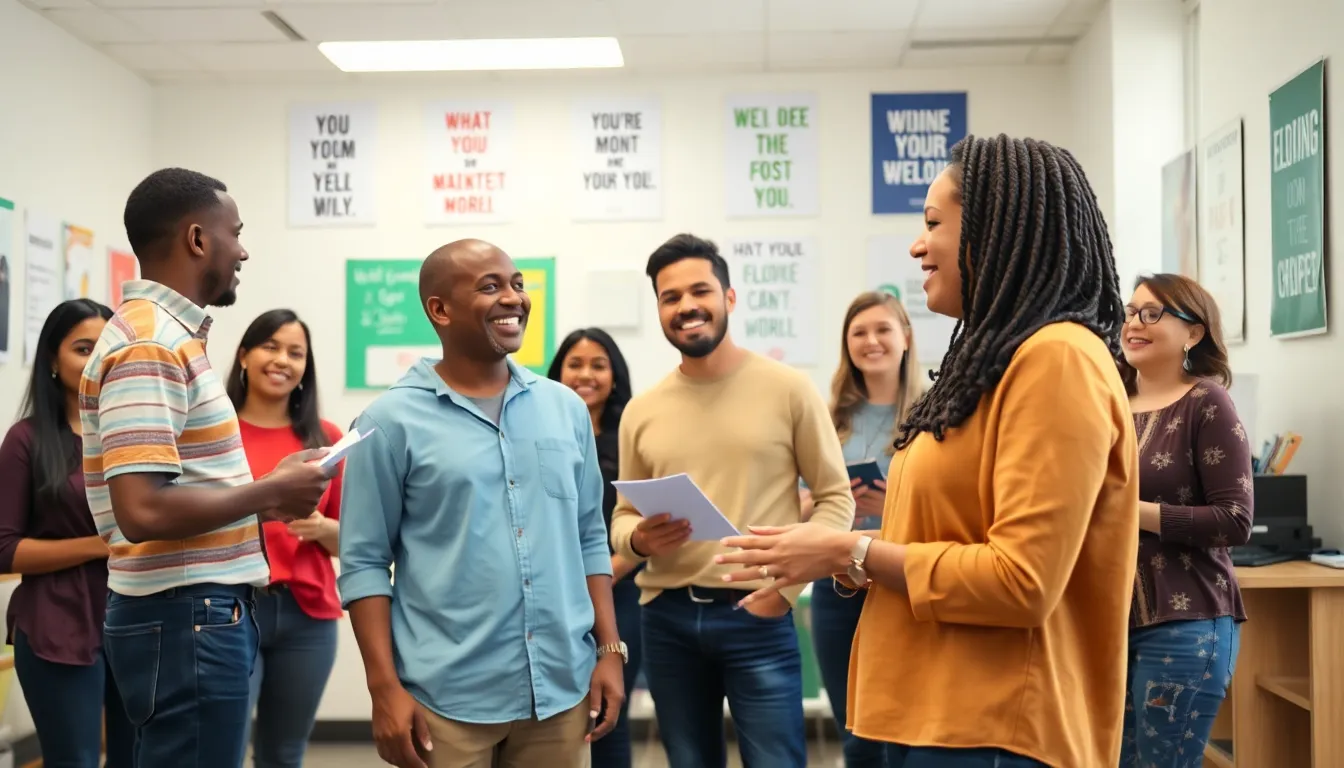Confidence is a vital ingredient for success in both personal and professional realms. It shapes how individuals perceive themselves and influences their interactions with others. Yet, many struggle to find or maintain this essential trait. Understanding the foundations of confidence can empower anyone to unlock their true potential.
Building confidence isn’t just about positive thinking; it involves practical strategies and a willingness to step outside comfort zones. From setting achievable goals to embracing failure as a learning opportunity, each step taken can lead to a more assured self. With the right mindset and tools, anyone can cultivate a lasting sense of confidence that propels them forward in life.
Table of Contents
ToggleUnderstanding Confidence
Confidence represents belief in one’s abilities and judgments. It plays a crucial role in personal growth and success.
Definition of Confidence
Confidence embodies a strong self-assurance in one’s skills, qualities, and decisions. This self-belief often translates into positive actions and interactions. Confident individuals face challenges with resolve and demonstrate resilience, contributing to a proactive approach in varying situations. A clear definition emphasizes that confidence isn’t arrogance; it’s an authentic understanding of one’s strengths and limitations.
Importance of Building Confidence
Building confidence remains essential for numerous aspects of life, including relationships and career progression. High confidence enhances decision-making skills and encourages individuals to take risks. Increased confidence fosters effective communication, enabling clearer expression of thoughts and feelings. According to research from the American Psychological Association, confidence correlates with lower anxiety levels, leading to improved overall well-being. Developing confidence not only boosts self-esteem but also opens doors to new opportunities and experiences.
Strategies for Building Confidence


Implementing effective strategies can significantly enhance confidence. The following approaches provide tangible methods for individuals to build self-assurance in their abilities and decisions.
Setting Achievable Goals
Setting achievable goals lays the foundation for building confidence. Goals should be specific, measurable, attainable, relevant, and time-bound (SMART). By breaking larger objectives into smaller sub-goals, individuals can track progress more easily. For example, if someone aims to improve public speaking skills, they might start by joining a local group, then prepare speeches for small audiences. Each successful step reinforces belief in one’s capabilities, fostering a stronger sense of self-confidence.
Positive Self-Talk
Positive self-talk cultivates a supportive internal dialogue. By replacing negative thoughts with affirming statements, individuals create a more encouraging mindset. For instance, instead of thinking, “I can’t do this,” one might say, “I can learn and improve.” Regularly practicing positive affirmations can diminish self-doubt and enhance resilience. Utilizing daily reminders of strengths and past achievements boosts morale and reinforces confidence over time.
Embracing Failure
Embracing failure is essential for confidence development. Accepting that mistakes are part of the learning process allows individuals to view challenges as opportunities for growth. Reflecting on failures can yield valuable lessons, encouraging a more resilient attitude. For example, an athlete who didn’t win a competition might analyze performance to identify areas for improvement. This perspective shift transforms setbacks into stepping stones, fostering a stronger, more confident self.
The Role of Environment in Confidence
Environment significantly impacts confidence levels. Positive surroundings can uplift individuals, while negative settings can hinder self-assurance.
Supportive Relationships
Supportive relationships play a crucial role in building confidence. Encouragement from friends and family reinforces self-worth and promotes a sense of belonging.
- Constructive feedback from peers helps individuals recognize strengths and areas for improvement.
- Emotional support ensures individuals feel valued, which boosts their resilience against setbacks.
- Positive role models, such as mentors or coaches, provide inspiration and guidance, illustrating paths to greater confidence.
Research supports that individuals surrounded by affirming relationships experience higher self-esteem and reduced anxiety (American Psychological Association).
Positive Work and Social Spaces
Positive work and social spaces enhance confidence. A nurturing atmosphere fosters collaboration, creativity, and innovation.
- Open communication encourages individuals to share ideas without fear of judgment, which promotes confidence in sharing thoughts.
- Recognition and rewards for accomplishments validate efforts, motivating continued success and growth.
- Inclusive environments empower individuals by valuing diverse perspectives, enhancing the collective confidence of the group.
Studies show that supportive workplaces correlate with higher employee satisfaction, productivity, and overall confidence.
Techniques for Boosting Confidence
Various techniques exist to enhance confidence, focusing on mental imagery and physical presence. These techniques can significantly impact how individuals perceive themselves and how they interact with their environments.
Visualization Exercises
Visualization exercises enhance confidence by allowing individuals to mentally rehearse success. Imagining successful outcomes primes the brain for actual performance, leading to increased self-assurance. To practice visualization, individuals should:
- Identify Goals: Clearly define specific objectives, whether related to public speaking, sports, or personal achievements.
- Create Mental Images: Close the eyes and construct vivid images of success, focusing on details such as sights, sounds, and emotions.
- Rehearse Scenarios: Regularly envision scenarios where success occurs, reinforcing a sense of preparedness.
- Use Affirmations: Pair visualization with positive affirmations that reinforce self-belief and commitment.
Repeated practice of these steps leads to strengthened confidence and the ability to handle real-life situations with greater ease.
Body Language Awareness
Body language awareness plays a crucial role in projecting confidence. Adopting positive body language not only influences how others perceive an individual but also impacts self-perception. To enhance body language, individuals can:
- Maintain Eye Contact: Engaging with others through steady eye contact conveys assurance and trustworthiness.
- Stand Tall: Posture improvements, such as standing up straight, signal confidence and readiness.
- Use Open Gestures: Expansive movements and gestures create an inviting atmosphere and enhance communication effectiveness.
- Practice Relaxed Breathing: Deep breathing techniques reduce tension, fostering a calm and confident presence.
Implementing these body language techniques reinforces self-confidence by not only enhancing outward appearance but also influencing internal feelings and attitudes.
Building confidence is a journey that requires dedication and the right strategies. By embracing achievable goals and fostering a positive mindset, individuals can significantly enhance their self-assurance. Surrounding oneself with supportive relationships and constructive feedback creates an environment where confidence can flourish.
Incorporating techniques like visualization and body language awareness can further amplify this growth. As confidence grows so does the ability to face challenges head-on and seize new opportunities. Ultimately, cultivating confidence leads to personal and professional success, enriching one’s life in countless ways.




